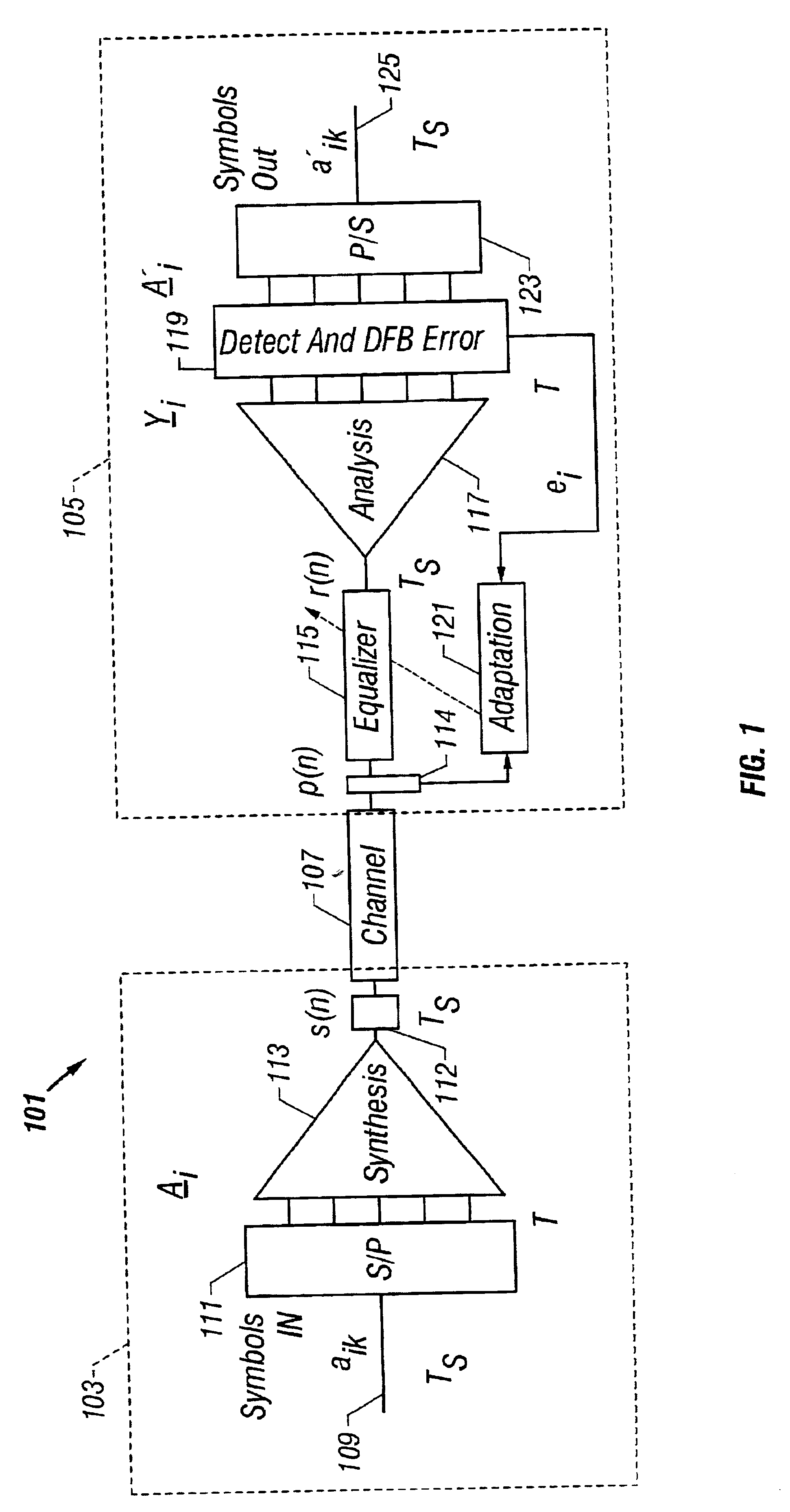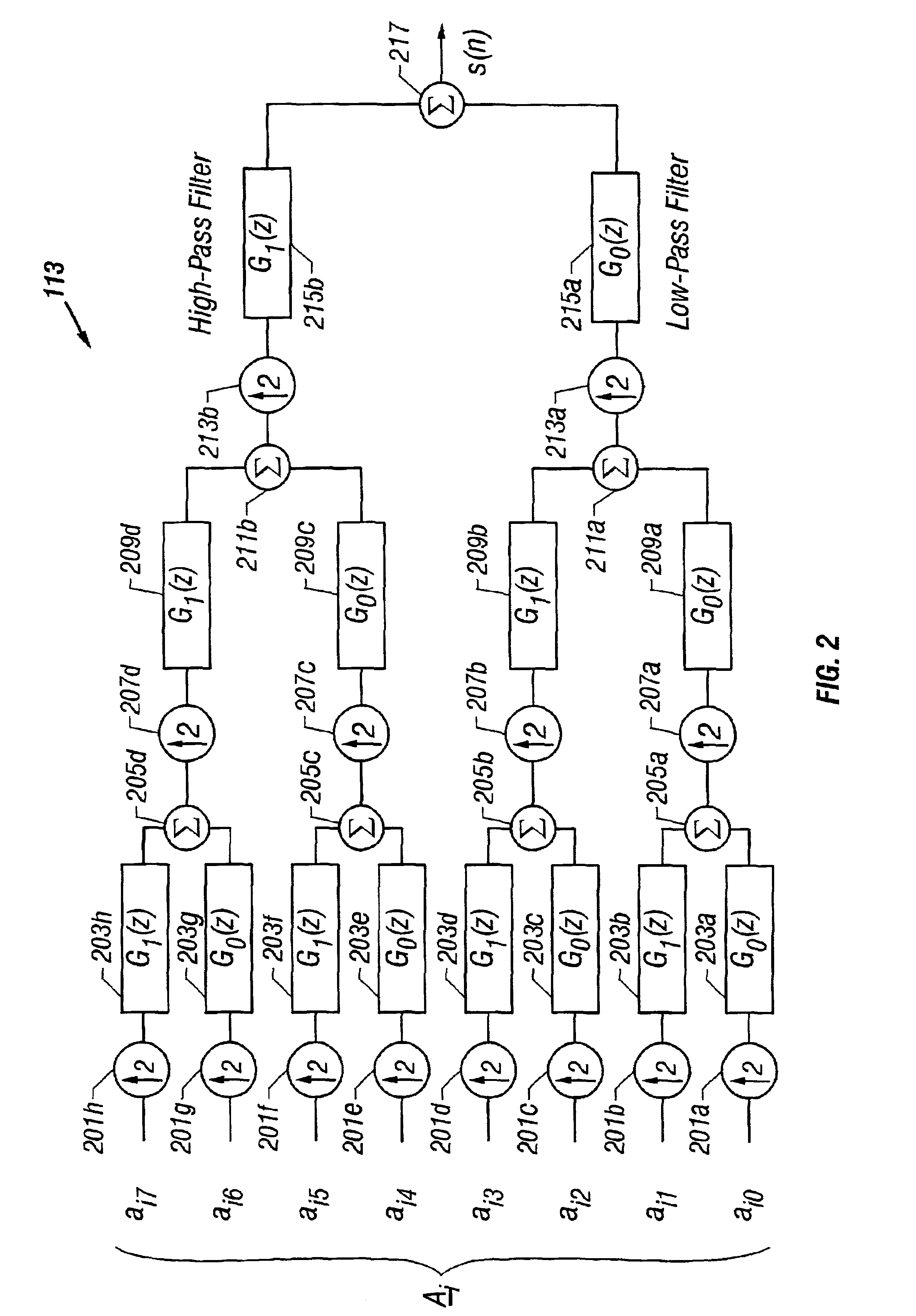Communication system using orthogonal wavelet division multiplexing (OWDM) and OWDM-spread spectrum (OWSS) signaling
a communication system and wavelet division technology, applied in the field of communication systems, can solve the problems of large footprint along the frequency axis, inability to use costly rake receivers, and inability to access (cdma), and achieve the effect of reducing the vulnerability to impulse noise, superior crest factor properties, and inherent robustness
- Summary
- Abstract
- Description
- Claims
- Application Information
AI Technical Summary
Benefits of technology
Problems solved by technology
Method used
Image
Examples
Embodiment Construction
[0042]FIG. 1 is a block diagram of a wavelet-based transceiver system 101 implemented in accordance with an embodiment of the present invention. The transceiver system 101 includes a wavelet based transmitter 103 and a wavelet based receiver 105 configured to communicate across a channel 107. The channel 107 may be a wireless medium or may be a wired media such as copper or cable. The transmitter 103 includes an input 109 that receives and provides a serial stream of symbols, denoted aik, to the input of a serial to parallel (S / P) converter 111. It is noted that the subscript “i” denotes the i-th supersymbol, denoted Ai, of a series of supersymbols and that the subscript “k” denotes an individual symbol of a supersymbol. The supersymbol Ai is a vector of symbols in which A1=[ai0 ai1 . . . ai,M−1]T where “M” denotes block length and where “T” denotes a supersymbol block interval. In this manner, the S / P converter 111 collects a group of M symbols of each supersymbol from the input sy...
PUM
 Login to View More
Login to View More Abstract
Description
Claims
Application Information
 Login to View More
Login to View More - R&D
- Intellectual Property
- Life Sciences
- Materials
- Tech Scout
- Unparalleled Data Quality
- Higher Quality Content
- 60% Fewer Hallucinations
Browse by: Latest US Patents, China's latest patents, Technical Efficacy Thesaurus, Application Domain, Technology Topic, Popular Technical Reports.
© 2025 PatSnap. All rights reserved.Legal|Privacy policy|Modern Slavery Act Transparency Statement|Sitemap|About US| Contact US: help@patsnap.com



